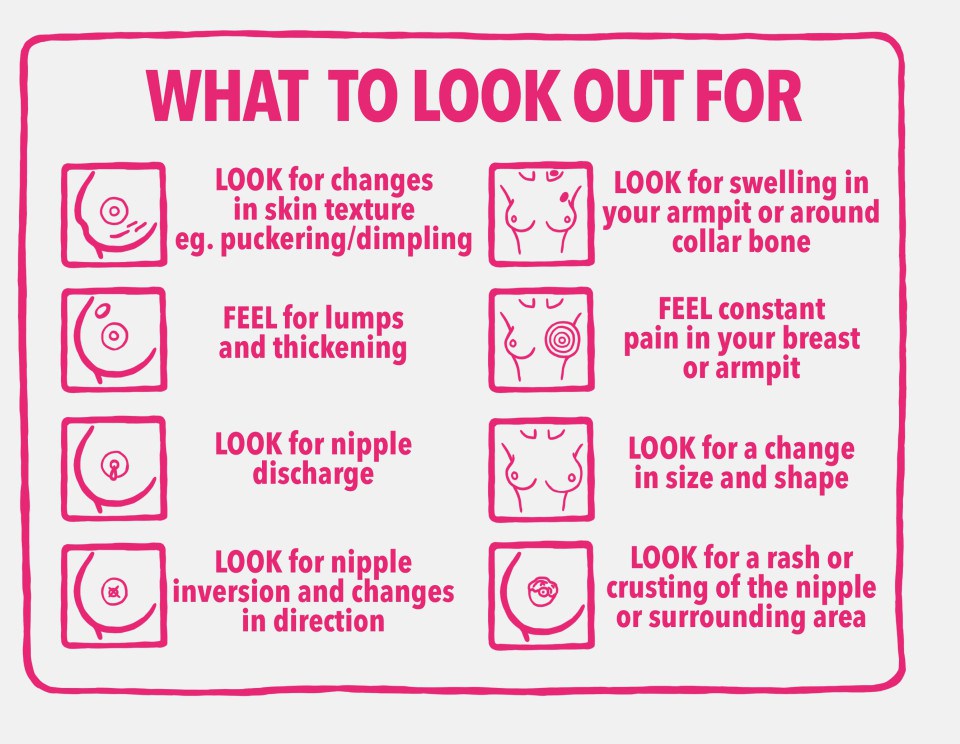Still on the matter of breasts, this time we will be learning about how to do a proper examination of the breasts by yourself, or even with your partner.
A self breast examination is best done a few days after your period, this is because your breasts sometimes become swollen and painful during periods so it’s better to wait for this to resolve before checking for any abnormalities.
- Start by standing in front of a mirror with your arms relaxed and at your sides. Look closely for changes in the breast such as swelling, dimpling or puckering of the skin. Then raise your hands above your head and look again.
- Put your hands behind your head, press your hands forward and look for any changes in the shape and contour of your breasts.
- Sitting down, rest your palms on your hips and press firmly to flex your chest muscles. This helps push the chest wall against the breast tissue and can help make some lumps more obvious.
- Squeeze your nipples gently to see if any fluid comes out of your nipples. If any fluid is seen, take note of the color and quantity and report to your doctor.
- Now you may lie down, this causes the breast tissue to spread out evenly along the chest wall.
- Lift your right hand and place it behind your head, then using your middle three fingers pressed closely together, start feeling around your breasts in a slow circular movement, then continue in a large circle all around your breast and up to your armpits.
- Using your thumb, press firmly and go around your nipple, feeling for any abnormalities.
- Now change hands, and repeat the same steps on the other breast.
- You can do this in the shower as well because it’s often easier to find lumps when your skin is slick and soapy.
- Breast self-exams can help women know what is normal for them, so if you do this regularly you are more likely to pick up on any abnormalities early enough.
- If you find a lump, schedule an appointment with your doctor, but don’t panic — 8 out of 10 lumps are not cancerous.But it’s always better to be safe and get checked out by a doctor.
However it is also important to note that a mammogram can detect a lump even before it’s felt so for women over 40years, it is recommended to get a screening mammogram every two years.

Share this:
Facebook Comments






